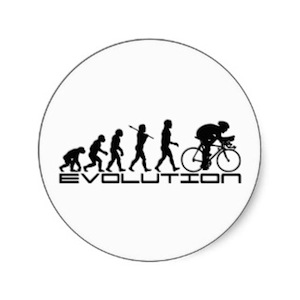A shift is coming to cities that would tilt the balance of personal transportation towards the eco-friendly and chic. This is the year that the British All-party Parliamentary Cycling Group (APPCG) produced a report aptly dubbed the “Get Britain Cycling Report” which contained 18 recommendations by politicians to boost all kinds of cycling. Their goals are ambitious – to boost cycling from 2% journeys in 2011 to 10% and 25% in 2025 and 2050 respectively.
While the politicians in London sipped tea and produced their armchair report, the Welsh government got straight down to work. Earlier this month in Wales, the pioneering Active Travel Act was passed to enable and encourage more people to use non-motorised transport – read, walking and cycling – to get around.
Is this trend in getting back on bicycles unique to the UK? Hardly.
In China, cycling has long been part of the culture and in the years following the Cultural Revolution, mopeds (fully electric bikes with no pedals) have become the choice for daily commutes by the average Chinese in cities. In 2008, the Hangzhou city government launched China’s first bicycle sharing system with 2,800 bicycles and a network of 60 stations. Fast forward to 2013 and the total number increased 20-folds to 66,000 bicycles and 2,700 stations in 19 cities. The Taiwanese government also launched its own system in 2009 with over 4,000 bikes.
While it is still too early to tell whether these new initiatives are here to stay, it certainly raises an important question – what are your options if you wanted to ride the trend and get on two wheels?
From Classic Gear and Chain to Electric Bikes
In response to demand, the electric bike or e-bike industry has grown at an astonishing pace. By 2025, the number of e-bikes in use around the world is projected to increase to 650 million pieces from roughly 150 million today. The number of traditional pedal powered bicycles in use is also increasing – just head to the streets and see for yourself.
Now, there are 3 main types of bicycles commonly used: traditional, folding, and electric.
Let’s start with the traditional bikes that have the bare essentials – wheels, pedal, handle, brakes, and lights.
Traditional Bikes
These have been around for a long, long time, and there is a reason for that. Like classic cars that don’t have the frills of computers on board, these bikes are purely mechanical and very reliable and repairable. The design varies in complexity for different models, but most come with a comfortable broad saddle, mud guard for the wheels, and basket to carry small items, like your precious Chiwawa (or bag pack, sometimes). One thing to note is the gender-specific design style of these bikes – the top bike is for gentlemen, and the bottom for ladies. There is no law that prevents you from riding either, though.
The Folding (“Foldie”) Bike
Without gender bias, these bikes have been gaining popularity and even gained cult status among some in recent years for their mobility on the road and in buses/trains. However, “foldies” seem to be a transitional style to cover the intermediate phase of the probable shift to widespread urban cycling, which would eliminate the need to carry bikes on to buses and trains – making the foldie possibly obsolete, perhaps except among the ‘purists’.
Enter the Electric Bike


This category of bikes is the future of urban mobility. Electric bikes are heavier, more expensive, a potential fire hazard, more susceptible to theft, and limited in range. These traits actually make the e-bike seem unattractive. But when you really hop on one, it quickly strikes you as a real contender on the roads. Let’s begin with a quick lowdown of e-bikes:
- Weight is typically 20 – 40kg compared to pedal bikes which range from 10kg (road bikes) to 15kg (steel frame old bike)
- Size range is similar to traditional bicycles and folding bikes
- Prices typically range from USD 1,200 – 4,000
- May be folding or non-folding types
Now, e-Bikes are meant to be bicycles fitted with motors. Those bikes that resemble normal bicycles but do not have pedals are called ‘mopeds’ – more like a mini motorcycle. Typically designed for road use, e-bikes represent a revolutionary way of getting around and it works by delivering a propulsion when it detects that you are slowing down due to an up-slope or facing difficulty moving forward. This delivery is seamless and makes uphill rides as comfortable as downhill ones. Just imagine zipping around your city without breaking into sweat while still getting some exercise – it’s a splendid experience.
And if all these have become too mainstream for you…
How about a flywheel bicycle?
Read also: Flying cars are now a reality – set to launch in 2015
















